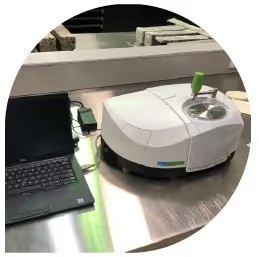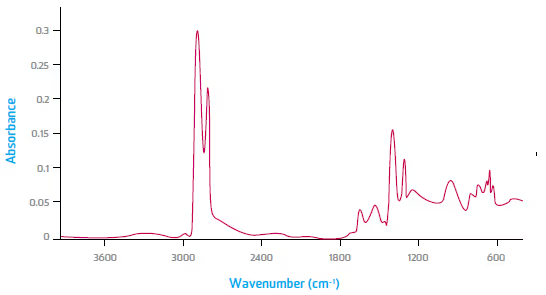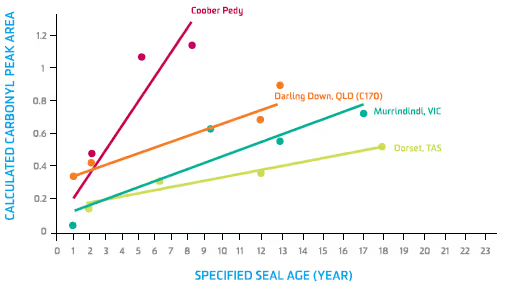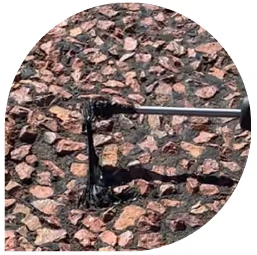

Acknowledgements
This project could not have been completed in the time frame it was completed without the selfless assistance of local governments and road agencies who collected and shipped seal samples. We would like to acknowledge (in no particular order):
Financial support for the study from the Department of Infrastructure, Transport, Cities and Regional Development (DITCRD), as it was then known, is acknowledged and appreciated. This paper is a much-condensed version of project reports originally written by our project team. The following therefore also had a significant hand in the information behind this article:
A key factor in the performance of bituminous seals, prior to needing maintenance or replacement, is the aging characteristics of the seal itself. The ability to assess the age of in situ binders through a swift and simple technique is therefore advantageous in supporting maintenance and rehabilitation strategies across Australia’s sealed road network.
Good-quality asset management records of previous construction or maintenance occurrences are not always available, and therefore budgeting and planning of future works optimally is a challenge for road agencies and local government. It is crucial that appropriate maintenance and rehabilitation programs are supported, with the correct tools and methodologies, to ensure serious failures of roads or erratic reallocation of resources does not occur.
The binders used in a pavement surfacing are subjected to various environmental factors, such as oxygen, UV light, high temperatures and rain; all can contribute to the deterioration of the binder. To assist in the provision of an easy and rapid in situ test to assess the deterioration (or aging) of binders, the Department of Infrastructure, Transport, Cities and Regional Development (DITCRD) sponsored a project to assess the suitability of a portable Fourier Transform Infrared Spectroscopy (FTIR) device as a possible candidate for adoption in practice. Figure 1 shows the device.

FTIR devices are often used to characterise the chemical composition of bituminous samples for comparison against other samples, and the monitoring of any changes that may occur to the initial composition. For this project, the characterisation of binder samples was undertaken using the portable FTIR device to determine the variation in chemical composition due to oxidation (i.e. aging), between samples of different ages, from various climatic regions across Australia.
This paper does not describe the Test Method itself, but rather the general approach to its development as a means of demonstrating that with the right team, development of test methods can take weeks or months rather than the years they normally do.
Test method development has traditionally been a lengthy process, with the duration normally ascribed to the need for rigour and validation through several studies to ensure the method when released is reliable.
ARRB and the Department of Infrastructure, Transport, Cities and Regional Development (DITCRD) recognised that while a traditional approach was followed, hundreds of millions of dollars would be lost to the economy. ARRB therefore undertook to develop a test method as fast as scientific rigour would allow, on the basis that having something to hand sooner (that might change with use) was better than having a gold-plated method available later.
It is an approach that ARRB is currently using to develop specifications for the use of typical Australian recycled plastics in Australian bituminous products, too.
The modelling of the binder oxidation-to-seal age relationship was the focus of the experimental design in this project. As binders are exposed to environmental factors over time, they begin to experience aging via oxidation. This oxidation of the binder is identifiable in the FTIR spectrum, using the carbonyl peak that occurs at a wavenumber of approximately 1,700 cm-1. The more oxidised a binder is, the larger this peak will be. It therefore makes it possible to correlate the age (in years) of a binder to the area beneath this peak. A typical FTIR spectrum is shown in Figure 2.

For this project, samples of known ages were collected from across Australia and their level of oxidation was analysed using the FTIR pictured back in figure 1. This device is portable and allows for quick, field analysis of samples, and has limited, if any, laboratory-condition requirements for operation. The development and validation of the testing methodology and subsequent results were conducted in the laboratory, however the testing procedure was conducted to mimic that expected in the field. The results were then validated using alternative laboratory testing (e.g. viscosity and stress ratio assessment using the Dynamic Shear Rheometer (DSR)).
Received samples were accompanied by information from the suppliers, including the seal age. In some cases, the ages were noted by the supplier as “best estimates”, whilst in others it was determined that the provided age was inaccurate. To help inform whether the provided/estimated ages were reliable or not, other laboratory processes for binder age determination were used, such as the DSR, and visual/tactile physical assessment (e.g. noting how brittle or soft the binder was).
The results obtained from the FTIR testing were used to develop reference curves relating binder age to carbonyl peak area for each sample provider (covering various climatic regions). Using this information, the age of unknown samples could be calculated.
Samples were collected from multiple climatic regions across Australia so that reference curves applicable to the different regions could be developed.
To assess the relationship between carbonyl peak area and age, samples were collected for three-to-four age groups from 14 regions across Australia.
Seal samples were provided as either core samples or A4-sized slabs, covering the following age brackets:
a. Fresh binder (up to three years old)
b. Intermediate I (between three to ten years old)
c. Intermediate II (between ten to 15 years old)
d. End of life (15+ years old).
For a robust reference curve to be developed, at least three values from three different age groups that have the same type of binder and location were required.
For validation testing using the aforementioned alternative laboratory methods (i.e. DSR), binder was extracted from the samples as per Austroads Test Method AGPT/T191-15.
As a new portable FTIR device was to be used for most of the sample analysis, the results were compared to a previously commissioned countertop (laboratory based) FTIR device on reference samples to determine if a calibration factor was required. The outcomes of this demonstrated that no calibration factor is required for the portable device.
For each climatic region, three samples from at least three age groups were required. If, for some locations, insufficient samples were available, a reference curve was not developed. Different curves were developed depending on the samples and the information provided, including:
The IR software was used to normalise the outputs, calculate the carbonyl area and develop the reference curves. Excel and SPSS software were then used to develop the models and test the correlation of the reference curves to ensure the IR software results were reliable.
Figure 3 shows four examples of the developed reference curves.

Upon completion of the laboratory testing and sample analysis, some overall trends were identified and explored for the sample binders.
For all regions, the oxidation was minimal within the first year, and then increased significantly at the early stage of ageing, between four to six years. Beyond this time, oxidation continued to occur, but the rate gradually slowed.
In general, the reference curves demonstrate that regions with higher average temperatures show greater levels of absorbance at the carbonyl peak than those with low average temperatures; this demonstrates the greater impact of higher temperatures on ageing characteristics.
For most participating regions in this project, the IR system software successfully developed relationships linking FTIR absorbance values (area under the carbonyl peak) to the ages of the binder samples. Binder type and sample location were taken into consideration, as different binder types and different locations (relative to the wheelpath) were found to exhibit different ageing characteristics and needed to be evaluated separately.
For all regions, bar one, the R2 values indicate that the relationships developed using this methodology appropriately describe the data.
For the local government regions that participated, the reference curve models from this work can be used, in conjunction with the portable FTIR assessment device, to indicate the apparent seal ages of other roads in their networks. This will help plan for future budget and maintenance programs as required.
LGAs wishing to develop their own curves to allow for specific environmental factors can take heart from the ease with which the device can be used and with which it is possible to develop site-specific reference curves.

The testing methodology and reference curves developed in this project demonstrate the ability to use the portable FTIR system in supporting the asset management of Australia’s sealed road network, through quick and simple characterisation of in situ binder age.
It was demonstrated that FTIR testing can be conducted on samples taken directly from the road surface, with the exception of samples that are highly aged (because of excessive hardness). This provides a promising future for this research methodology, indicating that field analysis can be conducted swiftly and simply, providing immediate results. For highly aged samples, the results can be obtained from laboratory extracted binders, extending the process slightly but still demonstrating great possibility.
The reference curves developed for the test method were limited to using those samples that could be collected, tested and analysed in the short time frames that were set for producing the first iteration of the test method. To further improve the accuracy of these reference curves, it would be necessary to obtain a wider sample base for analysis. For long-term, accurate reference curves, recommendations are as follows:
In terms of the implementation of this work in the field, it is recommended that an operator with experience, or appropriate training in utilising the FTIR device, carry out the seal sampling and analysis across any given jurisdiction. This will help to identify the age of seals where the date of construction information is not easily accessible, improve the accuracy of obtained results and minimise invested resources.
As the research methodology is applicable to both modified and unmodified binders, for a wide age range, this research model could be also applied to different aspects of the road asset aside from binder age (potentially the determination of type, and quantity of additives or modifiers within the binder), by identifying and studying different peaks within the FTIR spectra.
The appropriate application of this model could help road owners to manage their networks and provide for long-term maintenance plans, select and prioritise road sections for resurfacing and resealing operations, and to budget for the required future work in their networks.